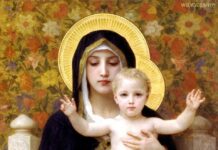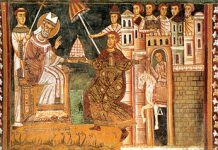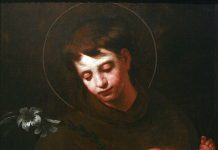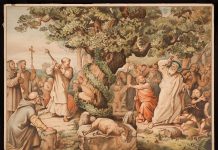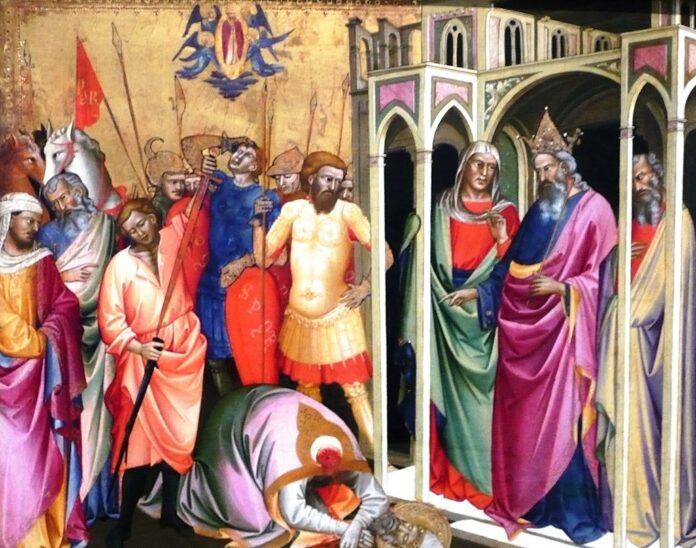
Today’s commemoration of saints are all connected with the persecution The first group suffered under the Stoic emperor Marcus Aurelius in the mid-2nd century, particularly as it raged in the then-Roman city of Lyons in 177, when the bishop, Saint Irenaeus, met his end, his feast being on June 28th.
Many martyrs suffered in that time, including two friends, Epipodius and Alexander. The latter was a physician, the former, a single bachelor, who dedicated his life to good works. Epipodius is the patrons saint of bachelors, demonstrating that, in some way, single life can be a vocation – sometimes chosen, sometimes thrust upon one by dint of circumstances and exigencies – so long as one gives oneself to something higher than oneself, as a path to God.
With Christians under sentence of death, they both fled to the countryside – like Thomas More, they probably thought that theirs was not the stuff of which martyrs are made. But they were betrayed, likely but some quisling, captured, tortured, and killed, Epipodius, the younger was beheaded, and Alexander, crucified, but he apparently, and mercifully, died almost immediately upon the cross.
This is also the commemoration of two Popes, who suffered under Diocletian in the third century. Pope Saint Soter (Greek for ‘Saviour’), who reigned during this persecution (167-174), doing what he could, with his limited power, to help exiled Christians, and alleviate their sufferings. He also fought the incipient heresy of Montanism, a kind of early quasi-Protestantism, wherein some Catholics, led by the enthusiasm of a certain Montanus, who claimed inspiration by the ‘Holy Spirit’, but which led him and his followers outside of orthodox Church teaching, thinking they knew better than the Church, or at least can work more effectively than the Church, by going outside and beyond the Church. Usually, we must wait upon God, and not get to impatient – Christ is in the boat, and will quell the storms in His own time. The great, but volatile, Tertullian fell under their sway. Father Ronald Knox, in his very recommended magnum opus, Enthusiasm (the history of such movements within and outside the Church) has a chapter on the heresy, which I think I should re-read, for the Montanist spirit is still very much with us.
Pope Soter also formally declared that a marriage, as one of the seven sacraments is only valid if officiated in the presence of a priest. This was defined further by the Council of Trent in the decree Tametsi (which added the need for two witnesses). Pope Soter is not listed amongst the martyred Popes (unlike the rest of second-century pontiffs). He died, we know not how, in 174 A.D., and rejoices in heaven with all the saints, martyrs and angels.
Pope Caius (283 – 296)decreed that a bishop first had to hold the minor orders of porter, lector, exorcist and acolyte, and then become a priest. Some have been rushed through these steps, but the norm is that one works his way to the highest office in the Church be degrees, and by hard-won experience in the trenches. Caius by tradition took refuge in the catacombs during the persecution of Diocletian, and was eventually captured, refused to throw incense on the fire to the Roman gods, and so was martyred, likely by beheading.
All holy Popes and martyrs, orate pro nobis! +

